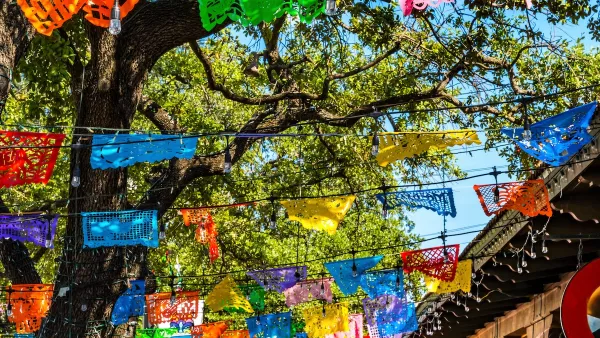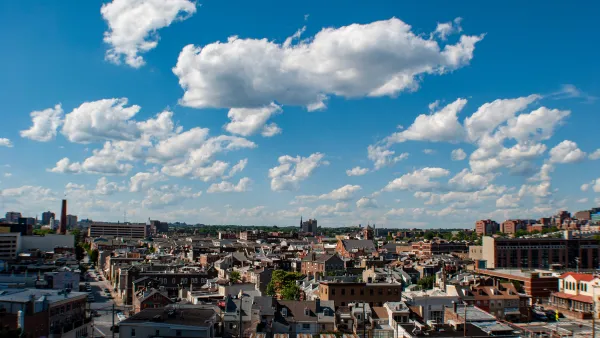As excitement around the L.A. River revitalization heats up, neighbors of the once-neglected channel wonder who will benefit from the billion-dollar redevelopment.
Even partial restoration of the Los Angeles River has been promised to yield a bounty of benefits in the areas of public health, water conservation, and urban placemaking. But a piece in The Nation suggests that communities who lived near the channel through its less glamorous days may never reap those benefits.
The article explores what it calls "the striking alignments of interest among the mayor, the River Corp., and the city's power elite with regard to the project," noting the seeming conflicts of interest in the non-profit implementing the restoration plan, as well what looks like city cooperation with wealthy developers in buying, selling, and rezoning properties in the increasingly desirable area:
"[T]he fear of many current residents [is] that because real-estate interests have been free to speculate and exert influence without adequate public oversight, the very people who fought for open spaces in their neighborhoods along the river—among the least wealthy and least healthy in LA, and with the fewest public parks—may not be able to afford to stick around long enough to enjoy them."
Is there any chance that the influx of money around the river will reach existing river communities? Perhaps: The city has considered designating the area as a new type of district, where tax revenues would be dedicated to infrastructure improvements and community-based projects.
Community faith in the river's coming "rebirth" hardly improved with the news that architect Frank Gehry would conduct the restoration. Some viewed that decision—which wasn’t made public for nearly a year—as a betrayal to years of community work; activist Lewis MacAdams called it "the epitome of wrong-ended planning."
Kreitner's piece weaves these threads into a suggestive narrative that places fears surrounding the river project in the context of other casualties of L.A.'s relentless march toward progress—Chavez Ravine, Chinatown, Bunker Hill—and employs an informative cast ranging from local leaders and community members to St. Francis of Assisi and Mary Pickford.
FULL STORY: Will the Los Angeles River Become a Playground for the Rich?

Analysis: Cybertruck Fatality Rate Far Exceeds That of Ford Pinto
The Tesla Cybertruck was recalled seven times last year.

National Parks Layoffs Will Cause Communities to Lose Billions
Thousands of essential park workers were laid off this week, just before the busy spring break season.

Retro-silient?: America’s First “Eco-burb,” The Woodlands Turns 50
A master-planned community north of Houston offers lessons on green infrastructure and resilient design, but falls short of its founder’s lofty affordability and walkability goals.

Test News Post 1
This is a summary

Analysis: Cybertruck Fatality Rate Far Exceeds That of Ford Pinto
The Tesla Cybertruck was recalled seven times last year.

Test News Headline 46
Test for the image on the front page.
Urban Design for Planners 1: Software Tools
This six-course series explores essential urban design concepts using open source software and equips planners with the tools they need to participate fully in the urban design process.
Planning for Universal Design
Learn the tools for implementing Universal Design in planning regulations.
EMC Planning Group, Inc.
Planetizen
Planetizen
Mpact (formerly Rail~Volution)
Great Falls Development Authority, Inc.
HUDs Office of Policy Development and Research
NYU Wagner Graduate School of Public Service




























